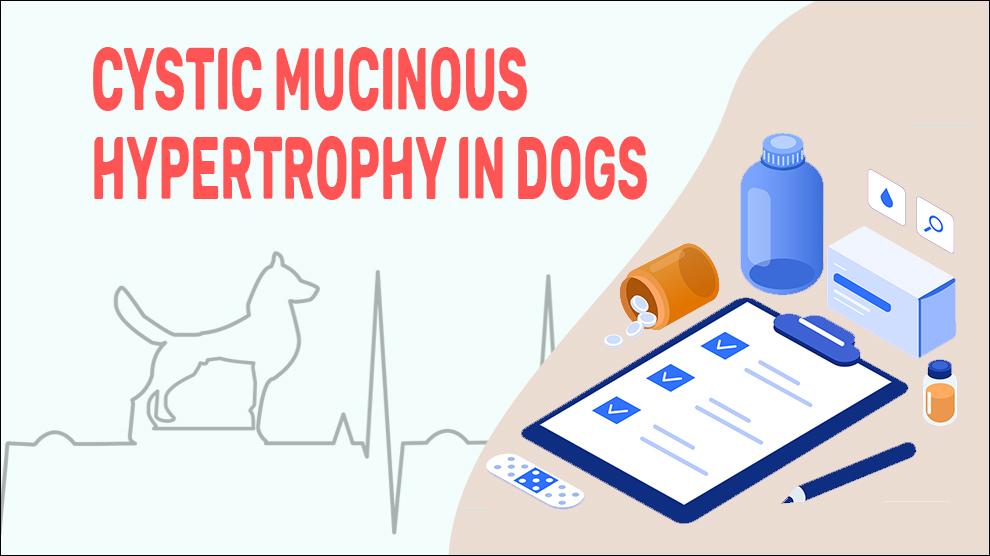Cystic mucinous hypertrophy (CMH) of the gallbladder is an idiopathic, non-inflammatory tumor-like lesion (with uncertain malignant potential) wherein the "cystic" structures are filled with solid visco-elastic mucin.
Simply, Gallbladder mucoceles are asymptomatic cysts in the gallbladder containing an excessive accumulation of mucus. The main gross irregularity associated with Cystic mucinous hypertrophy is gallbladder may unusually distend due to excessive accumulation of mucus within the lumen. Although the clinical presentation is variable and signs may even be absent, Mucoceles have become a significant cause of extrahepatic biliary tract disease in dogs.
Also called Cystic mucinous hyperplasia or mucinous cholecystitis, this disease terminology really sounds confusing and so are the symptoms, the pathogenesis of mucinous hyperplasia is really vague. Besides the names, this is multifactorial in nature and several different causes of the disease exist.
Abnormality of the mucosal cells within the gallbladder may also result in gall bladder mucocele development resulting in hyperplasia of mucus-secreting cells. The mucosal cells abnormality may be a primary reason or due to secondary defect arising from exogenous or endogenous substances acting on epithelial cells in the gallbladder.
Mucoceles might also originate secondary to a blemish in gallbladder motility. Cystic mucinous hyperplasia has also been identified in tandem with other gallbladder conditions (cholecystitis).
Symptoms Of Cystic Mucinous Hypertrophy
- Enlargement of the gall bladder
- Hyperthermia
- Rapid heart rate
- Abdominal fluid accumulation
- Anorexia to different degrees
- Hyperbilirubinemia
- Hypercholesterolemia
- Weight loss, Dehydration
- Vomiting, Diarrhea
- Icterus (jaundice)
- Right-sided discomfort upon examination
- Inappetence
Treatment Options For Cystic Mucinous Hypertrophy
Treatment depends on the cause.
Broad-spectrum antibiotics are initially started and once cultures and blood tests have been obtained, then the antibiotic choice may be changed.
For the anorexic, nauseated, and systemically ill dogs, hospitalization for supportive therapy such as intravenous fluids might be required.
When infectious CMH exacerbates immune-mediated complications - corticosteroids (prednisone, prednisolone, dexamethasone, triamcinolone) and other immunomodulating medications (such as Cyclosporine (CSA), Azathioprine, Mycophenolate mofetil) are provided.
Gall Bladder Stones:
1) Surgical removal - Cholecystectomy
2) Non-surgical removal – Urohydropropulsion (special catheter with a saline solution flushed through the bladder to expel the stones)
3) Dietary dissolution - High-protein,low-fat diet
Bile Duct Cancer: Surgery, chemotherapy, radiation, or a combination of these treatments.
Benign bladder polyps are usually surgically removed.
Home Remedies For Cystic Mucinous Hypertrophy
Encourage your dogs to water intake by placing water bowls, and a water fountain nearby.
Add flavor to water (bone broth or chicken broth) or add wet food to his food ration.
Prevention Of Cystic Mucinous Hypertrophy
Prevention from canine mucinous hypertrophy can be done only by preventing underlying causes. Pet owners should discuss how to prevent the possibility of gallbladder disorders with the vet.
Affected Breeds Of Cystic Mucinous Hypertrophy
There is no breed or sex disposition.
Older dogs are at a much higher risk of infection (median age is 9 years).
Shetland Sheepdog, Cocker Spaniel, Miniature Schnauzer, Bichon Frise, Beagle, Middle Age Dogs
Additional Facts For Cystic Mucinous Hypertrophy
1. Causes:
- Cholestasis (decrease in bile flow or complete stopping)
- Inflammatory bowel disease (IBD)
- Gallbladder stones
- Chronic pancreatitis (inflammation of the pancreas)
- Unhealthy gut
- A weakened immune system
- Thickened Gallbladder secretions that are unable to be excreted by your dog
- Disorders that impede bile flow
2. Types:
When the CMH is found concurrently with cholecystitis
- Non-necrotizing - They are asymptomatic.
- Necrotizing (Gangrenous) – A severe form of Perforation of the gallbladder wall and necrosis because of progressive vascular insufficiency and ischemia.
- Emphysematous - Also called clostridial cholecystitis, this is a fulminant variety of an acute infection in the lumen or gallbladder wall caused by gas-forming organisms such as E Coli and Clostridium species.
3. Mortality:
CMH is usually a benign condition and usually does not progress to malignancy as the tumors often don't change much over time.
4. Diagnosis:
- Endoscopic retrograde cholangiopancreatography (ERCP)
- Percutaneous transhepatic cholangiogram (PTCA)
- Urinalysis and bloodwork
- Serum biochemistry profile
- X-rays
- Ultrasound, CT scan
5. Prognosis:
The outcome of CMH treatment is based on the etiology. If left untreated, it can lead to sepsis and will be life-threatening. When the obstruction is due to chronic liver pathology, the prognosis is usually poor. Obstructions of bile ducts caused by cancer often have a worse prognosis.
Proper diagnosis of this disease is always best left to your vet to make sure that it is not progressing into a serious form.
When To See A Vet
The dog may be as asymptomatic or show fewer signs or it may be very obvious, depending on the severity and the specific dog.
It is abnormal for CMH to manifest signs of systemic infection (such as fever or lethargy); when this happens, it means a more serious condition (such as a bile duct cancer) is prowling inside.
An appropriate diagnosis of this disease is always best left to your vet to make sure that it is not progressing into a serious form.
Food Suggestions For Cystic Mucinous Hypertrophy
- Appropriately formulated fresh food diet
- A big ‘NO’ to dry foods
- Protein (moderate levels of bioavailable protein)
- Leafy greens, fresh vegetables, and antioxidants
- Add safe dairy products (cottage cheese, ricotta cheese, and yogurt)
- Omega fats: omega-6 and omega-3 in a 4:1 ratio
- Low in Phosphorus (0.2% - 1% dry matter)
- Regulated treats that are part of the daily calorie intake
- Avoid foods high in copper (organ meats)
Conclusion
As in many cases, the cystic mucinous hypertrophy etiology is often serious in nature and it can be treated efficiently if it is diagnosed early.
There is no evidence to support the reoccurrence of cholecystitis. However, always follow the progress with regular checkups and keep an eye on any appearance of symptoms you noticed in the past.

















